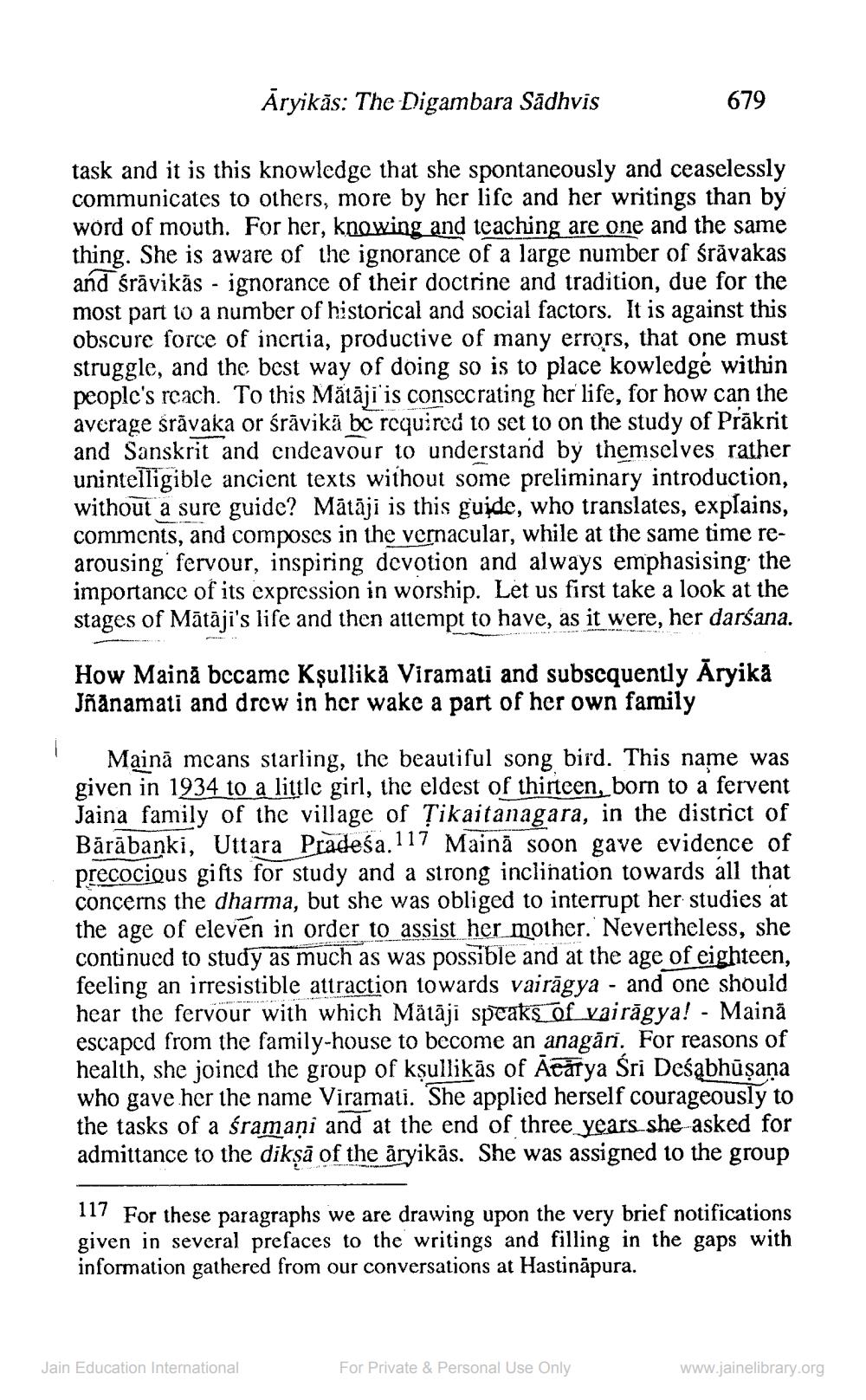________________
Āryikās: The Digambara Sadhvis
679
task and it is this knowledge that she spontaneously and ceaselessly communicates to others, more by her life and her writings than by word of mouth. For her, knowing and teaching are one and the same thing. She is aware of the ignorance of a large number of śrāvakas and śrāvikās - ignorance of their doctrine and tradition, due for the most part 10 a number of historical and social factors. It is against this obscure force of incrtia, productive of many errors, that one must struggle, and the best way of doing so is to place kowledge within people's reach. To this Mätāji is consecrating her life, for how can the average srāvaka or śrāvikā be required to set to on the study of Prākrit and Sanskrit and endeavour to understand by themselves rather unintelligible ancient texts without some preliminary introduction, without a sure guide? Mātāji is this guide, who translates, explains, comments, and composes in the vernacular, while at the same time rearousing fervour, inspiring devotion and always emphasising the importance of its expression in worship. Let us first take a look at the stages of Mātāji's life and then attempt to have, as it were, her darśana.
How Mainā became Kșullikā Viramati and subsequently Aryika Jñånamati and drew in her wake a part of her own family
Mainā mcans starling, the beautiful song bird. This name was given in 1934 to a little girl, the eldest of thirteen, born to a fervent Jaina family of the village of Țikaitanagara, in the district of Bārābanki, Uttara Pradeśa.117 Mainā soon gave evidence of precocious gifts for study and a strong inclination towards all that concerns the dharma, but she was obliged to interrupt her studies at the age of eleven in order to assist her mother. Nevertheless, she continued to study as much as was possible and at the age of eighteen, feeling an irresistible attraction towards vairāgya - and one should hear the fervour with which Mätāji speaks of vairāgya! - Mainā escaped from the family-house to become an anagāri. For reasons of health, she joined the group of kşullikās of Acārya Sri Desabhūşana who gave her the name Viramali. She applied herself courageously to the tasks of a śramaņi and at the end of three years she asked for admittance to the dikṣā of the aryikās. She was assigned to the group
117 For these paragraphs we are drawing upon the very brief notifications given in several prefaces to the writings and filling in the gaps with information gathered from our conversations at Hastinapura.
Jain Education International
For Private & Personal Use Only
www.jainelibrary.org




